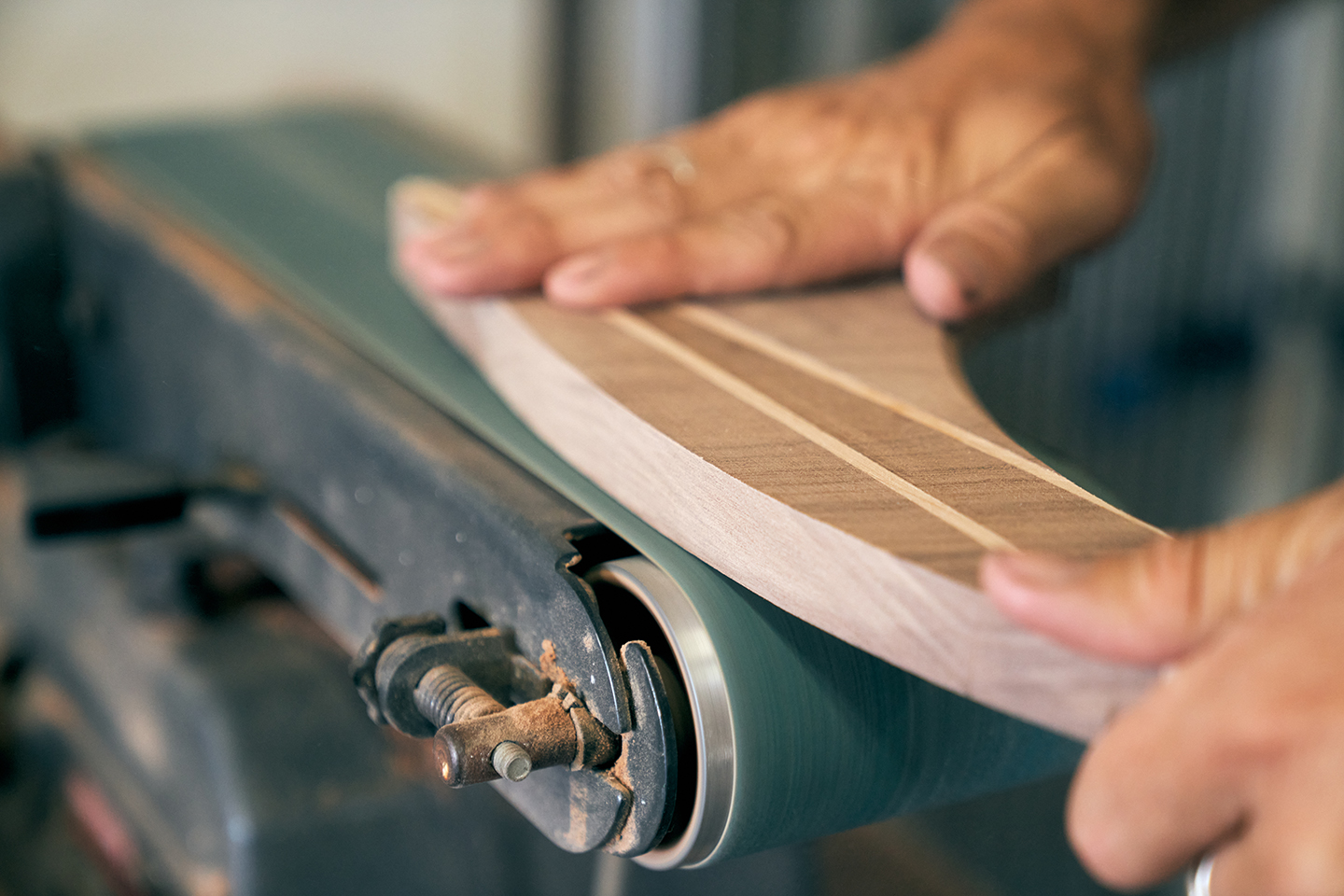Text by Christine Hitt
Images by Tony Ung
Finding a board that connects with the waves in a harmonious way is a lasting desire of surfers. For Tyler Frome, hollow surfboards are that vessel.
Frome, the owner of Year One Surf Co., has been making handcrafted hollow surfboards in his Los Angeles shop for 13 years. He started shaping in 2005, beginning with making the sport’s standard foam-core boards, which evolved into learning about hollow wooden surfboards. He built one for himself, another for a friend, and his interest rose from there.
“The hollow wooden surfboard is based on the original Tom Blake build, which was basically like an airplane-wing structure,” Frome says, referring to the intricate woodworking method that, mid-process, looks like the skeleton of a fish. “It has a center stringer with ribs every 8 inches, and that interior framework provides the support.”

Frome puts decking on the top and bottom of the interior, adds cork to the rails, and then shapes the board in a traditional way, which involves hand-sanding with sandpaper, blending the foil, and accentuating contours.
The resulting board is lighter on the water than foam boards. “You get increased speed through the weight,” he explains, “and increased buoyancy through the air trapped inside the board.” Though hollow, they’re not delicate. On the contrary, hollow boards are as durable as foam boards since they are also glossed with epoxy resin, and they are easy to fix if dinged.
Hollow surfboard design was invented in 1929 by Wisconsin-born surfer Tom Blake, who learned to surf at the Santa Monica Swim Club in 1921. It revolutionized surfing at a time when the Hawaiian 16-foot-long olo boards and 7-foot-long alaia boards, made of solid wood planks, were widely used. It made surfing more accessible to people who weren’t interested in hauling 100- to 200-pound boards to the beach.
All of the people I admire spent time with the hollow board and kept doing it throughout their whole career, so I feel like I’m almost carrying on that tradition.
Tyler Frome
“When Tom Blake came in with the hollow-board technique, that upped the game. It was the only thing until the foam revolution,” Frome says. “A lot of the Californians started doing it, people like Dale Velzy, who’s like my personal shaper hero. … All of the people I admire spent time with the hollow board and kept doing it throughout their whole career, so I feel like I’m almost carrying on that tradition.”
Frome crafts the boards from reclaimed wood, picking the interior frames from a cabinetry shop and the external materials from a lumber yard and mill that salvages redwood from old water towers in the Salinas River Valley. In line with his environmental values, he has also collaborated with organizations like The Surfrider Foundation and Yosemite Facelift, donating boards and volunteering for beach cleanups and trash pickups.

Each of Frome’s custom creations, which start at $2,000, features a personalized inlay design with abalone or shell work. Much of the abalone is sourced from a cache of shells his father collected while diving many years ago off the Northern California coastline. For Frome, the addition of shell or abalone gives every board its own spirit.
“It’s an involved process, but it has to be done well,” Frome says. “What you put in is what you get out, and with surfing being such a spiritual thing, it’s important to have something that has that kind of energy put into it.”


